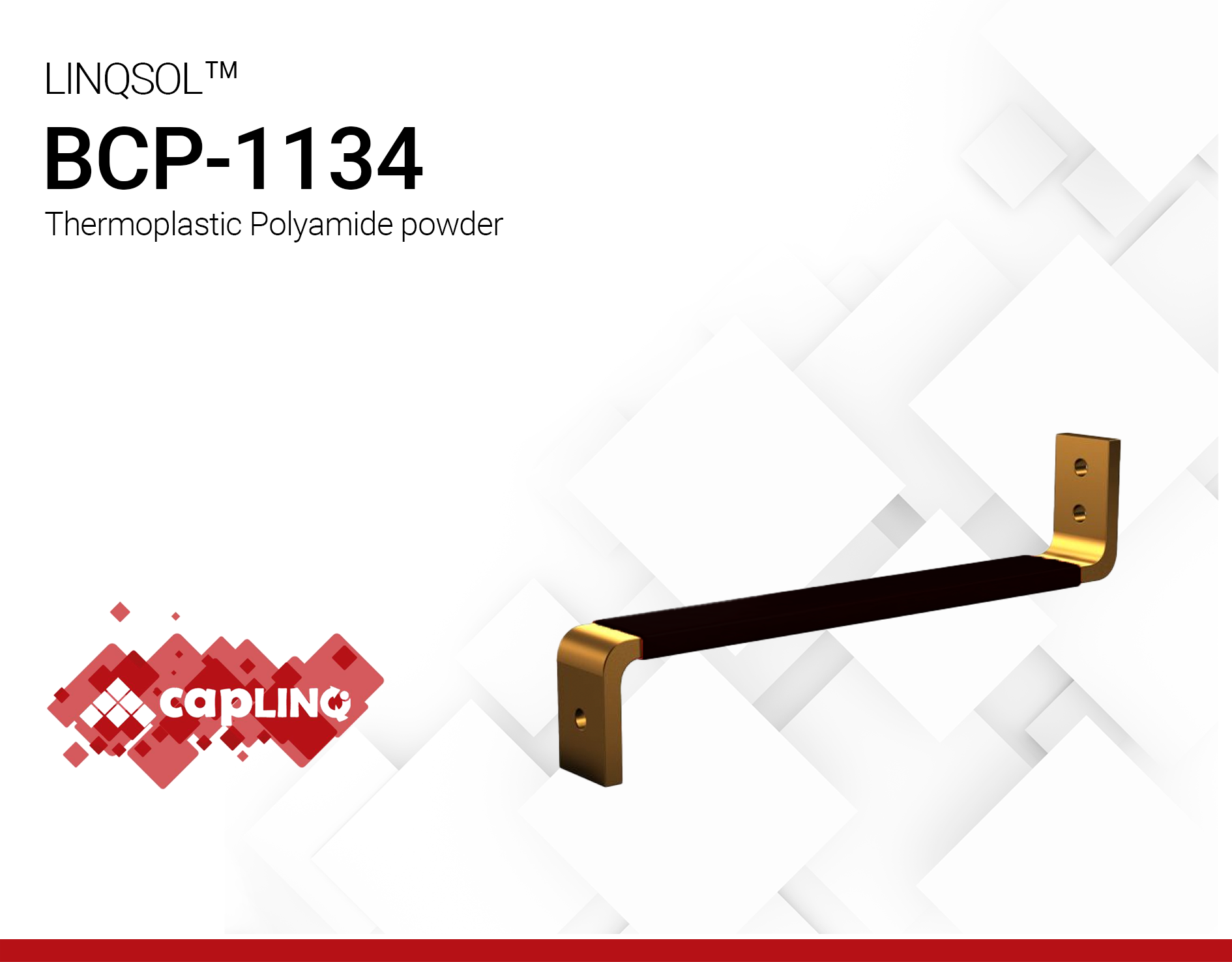BCP-1134 | Medium voltage Busbar Coating Powder
- Designed for EV and panel busbars
- 82 kv/mm insulation
- Thermoplastic
Product Description
Linqsol BCP-1134 is a thermoplastic coating powder capable of achieving a breakdown voltage of up to 82 kV/mm. It is a semi-crystalline powder that exhibits excellent spray characteristics, and due to its good melt flow and low density is ideal for electrostatic spray and dip coating applications.
A distinctive feature of Linqsol BCP-1134 is that it has a virtually infinite shelf life when stored at room temperature since cross-linking is not necessary for coating. It is very easy to apply, environmentally friendly, and great for applications where low coefficient of friction and good abrasion resistance are required.
This thermoplastic is used in technical and functional applications, but due to its smooth coating also has decorative applications. The best results can be seen on copper, nickel-coated, and aluminum busbars, and since the BCP-1134 is reworkable, damages can be repaired with ease.
Advantages of BCP-1134
- Offers good impact resistance to stress cracking
- Great for spray applications
- High-temperature resistance
- Good oil resistance
- Excellent melt flow
- High flexural modulus
Technical Specifications
| General Properties | |||||
| Chemistry Type | Powder | ||||
| Density (g) | 1.03 g/cm3 | ||||
| Chemical Properties | |||||
| Moisture absorption | 0.5 % | ||||
| Electrical Properties | |||||
| Breakdown Voltage Breakdown Voltage Breakdown voltage is the minimum voltage necessary to force an insulator to conduct some amount of electricity. It is the point at which a material ceases to be an insulator and becomes a resistor that conducts electricity at some proportion of the total current. After dielectric breakdown, the material may or may not behave as an insulator any more because of the molecular structure alteration. The current flow tend to create a localised puncture that totally alters the dielectric properties of the material. This electrical property is thickness dependent and is the maximum amount of voltage that a dielectric material can withstand before breaking down. The breakdown voltage is calculated by multiplying the dielectric strength of the material times the thickness of the film. | 85,000 V | ||||
| Mechanical Properties | |||||
| |||||
| Thermal Properties | |||||
| |||||
| UL 94 Rating UL 94 Rating Flammability rating classification. It determines how fast a material burns or extinguishes once it is ignited. HB: slow burning on a horizontal specimen; burning rate less than 76 mm/min for thickness less than 3 mm or burning stops before 100 mm V-2: burning stops within 30 seconds on a vertical specimen; drips of flaming particles are allowed. V-1: burning stops within 30 seconds on a vertical specimen; drips of particles allowed as long as they are not inflamed. V-0: burning stops within 10 seconds on a vertical specimen; drips of particles allowed as long as they are not inflamed. 5VB: burning stops within 60 seconds on a vertical specimen; no drips allowed; plaque specimens may develop a hole. 5VA: burning stops within 60 seconds on a vertical specimen; no drips allowed; plaque specimens may not develop a hole | V2 | ||||
| Other Properties | |||||
| RoHS Compliant RoHS Compliant RoHS is a product level compliance based on a European Union Directive which restricts the Use of certain Hazardous Substances in Electrical and Electronic Equipment (RoHS). Products compliant with this directive do not exceed the allowable amounts of the following restricted materials: lead, mercury, cadmium, hexavalent chromium, polybrominated biphenyls (PBB) and polybrominated diphenyl ethers (PBDE), with some limited exemptions | Yes | ||||
| Special Properties | Halogen Free | ||||



